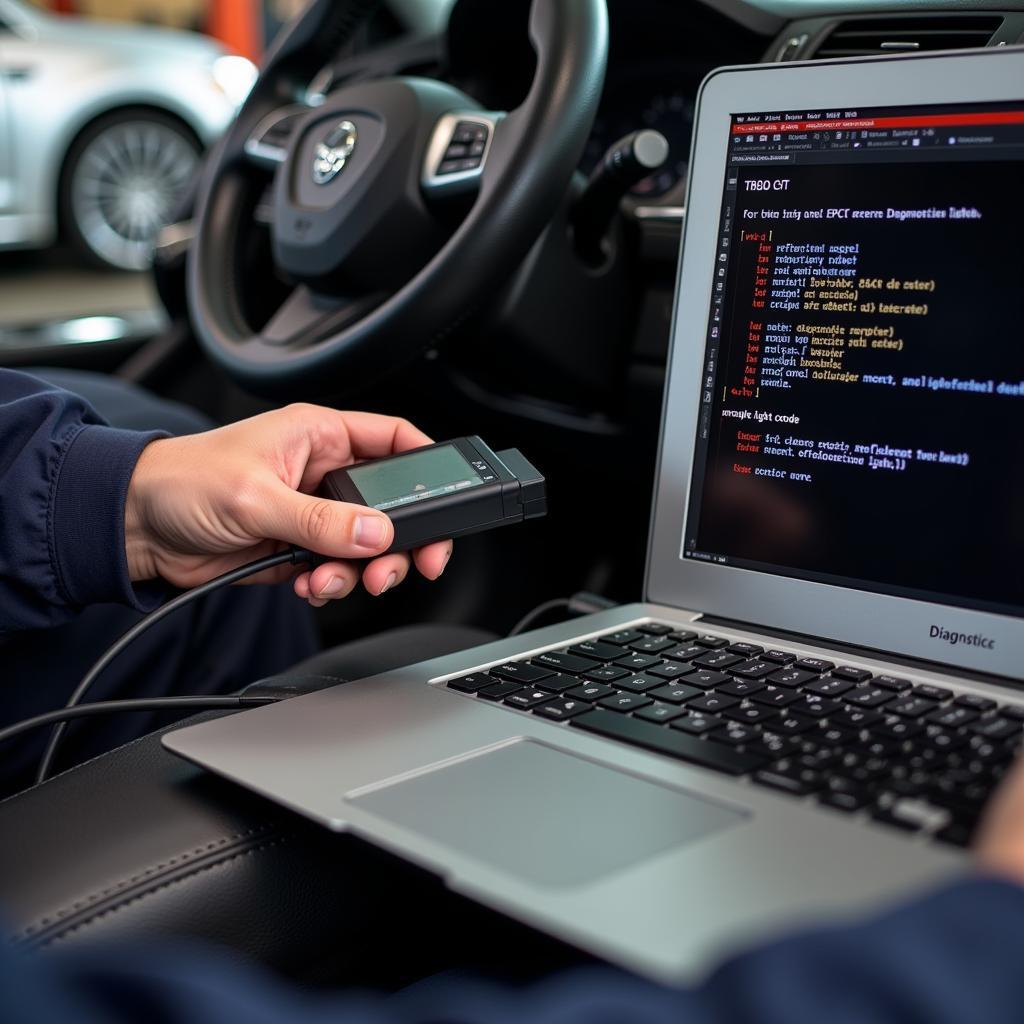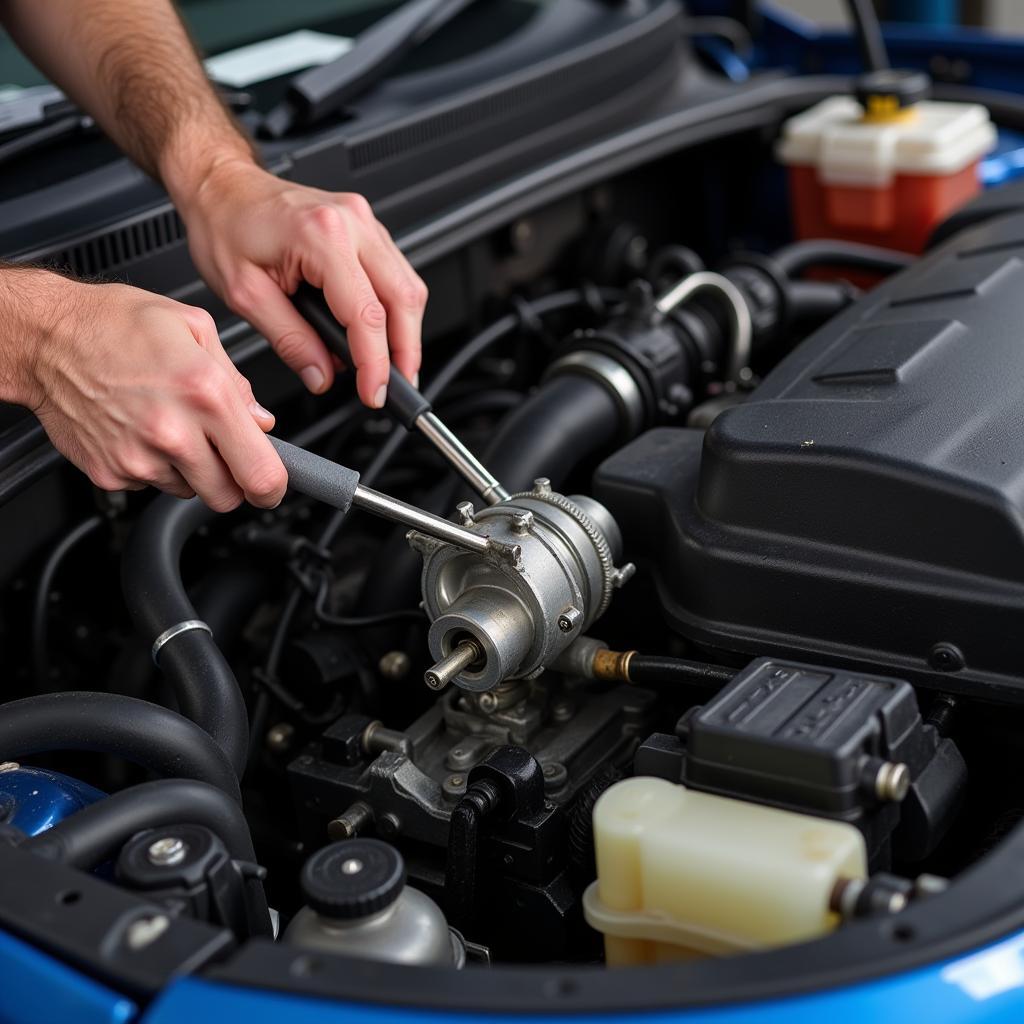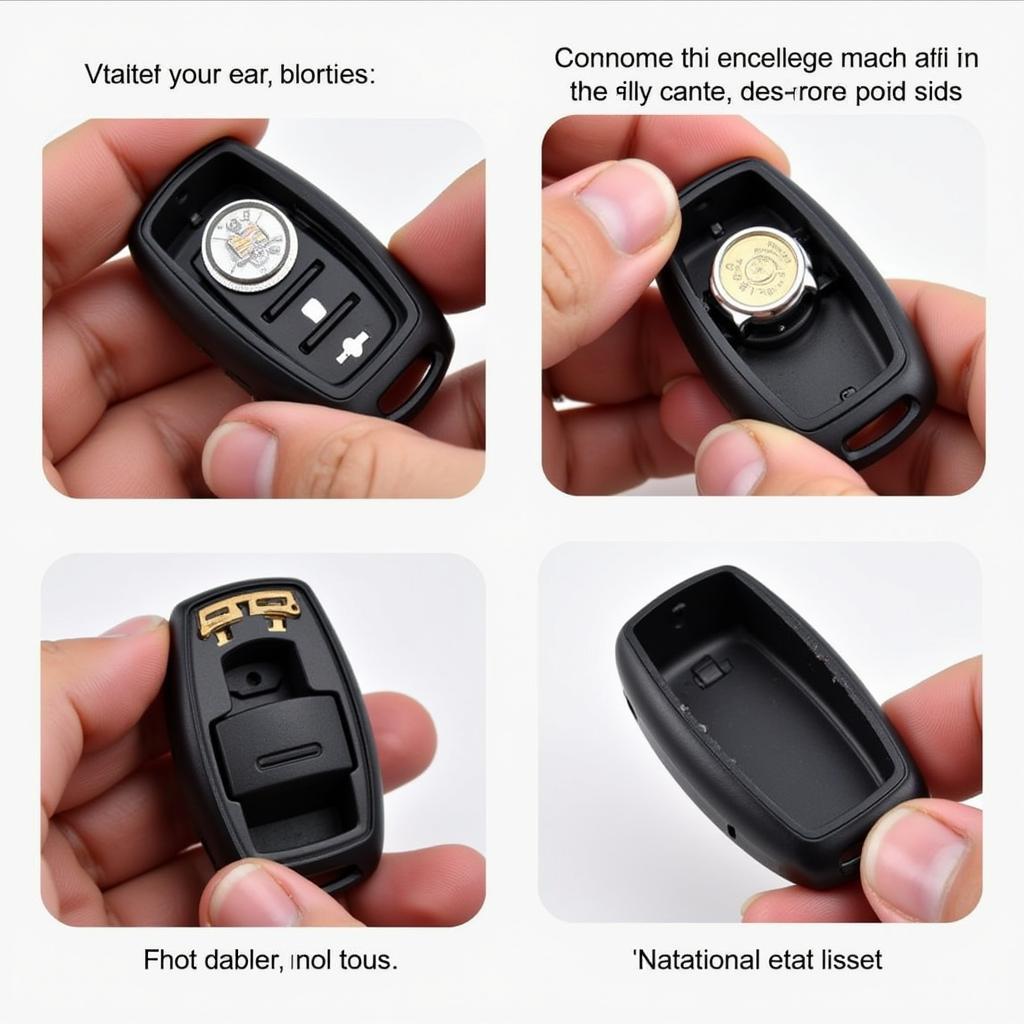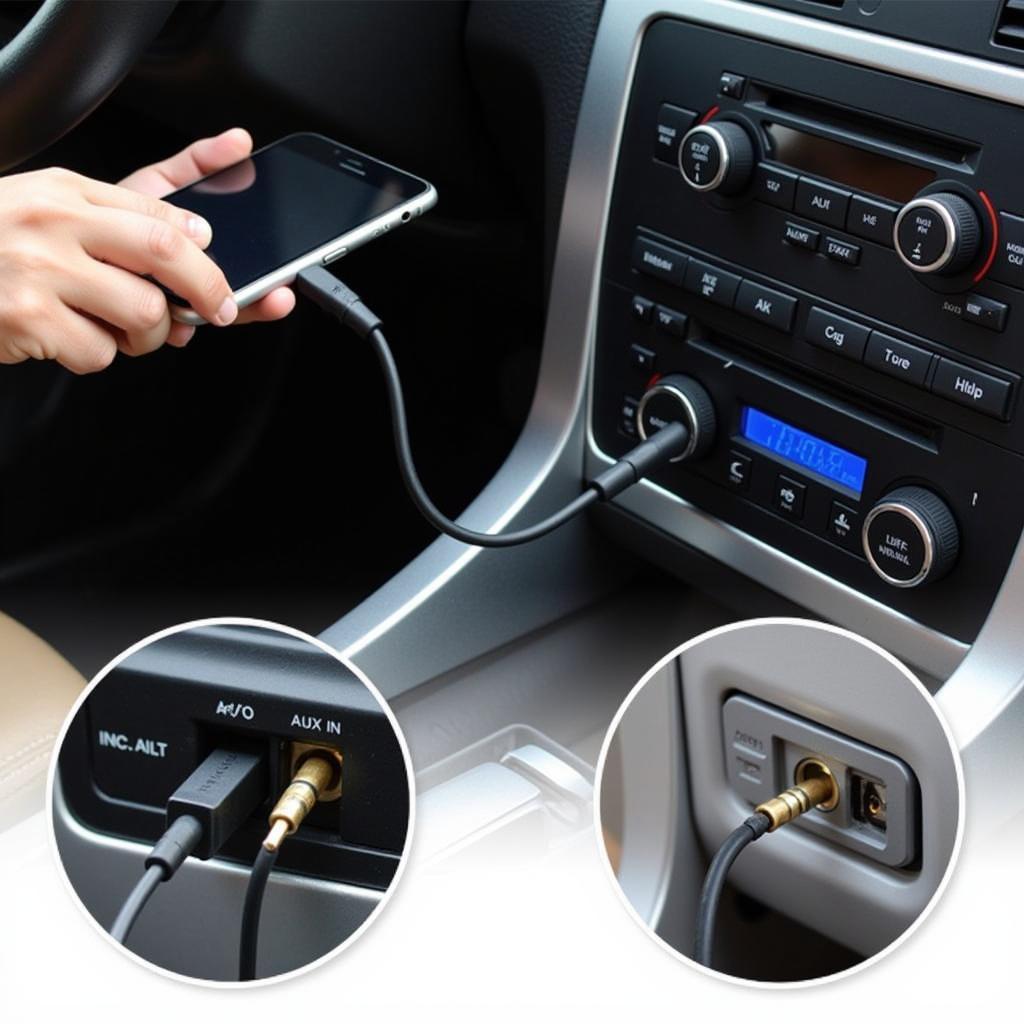The EPC warning light, also known as the Electronic Power Control warning light, is a common sight on the dashboard of Seat vehicles. When illuminated, it signals a problem within the vehicle’s electronic throttle control system or other engine management components. Seeing the EPC warning light illuminated can be concerning, especially when it appears alongside other warning lights. This article aims to demystify the EPC warning light on Seat vehicles and provide you with a comprehensive guide to understanding its implications and potential solutions.
What Does the EPC Warning Light Mean on a Seat?
The EPC light on your Seat is part of a system that monitors the engine, transmission, and other critical components. When the EPC light comes on, it means the engine control unit (ECU) has detected a malfunction within these systems. This malfunction can range from minor glitches to serious issues that could affect your vehicle’s performance and safety.
Common Causes of the EPC Warning Light Seat
Several factors can trigger the EPC warning light on your Seat. Here are some of the most common culprits:
- Faulty Throttle Position Sensor: This sensor relays information about the position of your accelerator pedal to the ECU. If it malfunctions, the ECU may not receive accurate information, leading to issues with acceleration and potentially triggering the EPC warning light.
- Malfunctioning Mass Air Flow Sensor (MAF): The MAF sensor measures the amount of air entering the engine, which is crucial for determining the correct air-fuel mixture. A faulty MAF sensor can disrupt this balance, causing performance problems and triggering the EPC warning light.
- Problems with the Throttle Body: The throttle body controls the amount of air entering the engine. If it’s dirty, clogged, or malfunctioning, it can disrupt airflow and lead to EPC warning light illumination.
- Faulty Brake Light Switch: Believe it or not, a faulty brake light switch can also trigger the EPC light in some Seat models. The ECU monitors the brake light switch, and if it detects an issue, it might turn on the EPC light as a precaution.
- Vacuum Leaks: Leaks in the engine’s vacuum system can disrupt the air-fuel mixture and impact engine performance, potentially leading to the EPC warning light appearing on your dashboard.
- Software Glitches: In some cases, a simple software glitch within the ECU can trigger the EPC warning light.
Diagnosing the EPC Warning Light Seat
 Diagnostic tools for EPC warning light
Diagnostic tools for EPC warning light
Diagnosing the EPC warning light typically requires specialized equipment and expertise. While some car owners may be comfortable using an OBD-II scanner to retrieve error codes, it’s generally recommended to consult with a qualified mechanic, especially for Seat vehicles known for their complex electronic systems.
When you take your Seat to a mechanic, they will likely use a diagnostic scanner to read the error codes stored in the ECU. These codes provide specific information about the potential source of the problem.
How to Fix the EPC Warning Light Seat
The solution to an EPC warning light issue depends entirely on the underlying cause. Here are some possible solutions your mechanic might recommend:
- Sensor Replacement: If the diagnostic process identifies a faulty sensor, such as the throttle position sensor or MAF sensor, replacing the faulty sensor is usually a straightforward fix.
- Throttle Body Cleaning or Replacement: A dirty or malfunctioning throttle body might require cleaning or replacement, depending on its condition.
- Vacuum Leak Repair: Identifying and repairing vacuum leaks involves inspecting the vacuum hoses and connections for any signs of damage or leaks.
- Brake Light Switch Replacement: If a faulty brake light switch is the culprit, replacing it is a relatively simple and inexpensive fix.
- Software Update or Reprogramming: In cases where the EPC warning light is triggered by a software glitch, updating the ECU’s software or reprogramming it might be necessary.
 Mechanic repairing a car's throttle body
Mechanic repairing a car's throttle body
Cost of Fixing EPC Warning Light Seat
The cost of fixing an EPC warning light on a Seat can vary significantly depending on the underlying cause and the labor rates in your area. Simple fixes like replacing a sensor can be relatively inexpensive, while more complex repairs involving the throttle body or ECU could be more costly.
Here’s a general idea of potential costs:
- Sensor Replacement: $100 – $300 (depending on the specific sensor)
- Throttle Body Cleaning: $50 – $150
- Throttle Body Replacement: $200 – $500
- Vacuum Leak Repair: $100 – $400 (depending on the location and severity of the leak)
- Brake Light Switch Replacement: $50 – $150
- Software Update/Reprogramming: $100 – $250
Can You Drive with the EPC Light On?
While you might be tempted to ignore the EPC warning light, especially if your car seems to be running fine, it’s generally not advisable to continue driving for extended periods or under demanding conditions with the EPC light illuminated.
Driving with the EPC light on could potentially lead to reduced engine performance, increased fuel consumption, and in some cases, even engine damage. If you experience any unusual symptoms like a sudden loss of power, rough idling, or difficulty accelerating, it’s best to pull over in a safe location and have your vehicle towed to a mechanic.
 Tow truck transporting a Seat car with EPC warning light issue
Tow truck transporting a Seat car with EPC warning light issue
EPC Warning Light Seat Arona, Ibiza, Toledo, Arosa: Model-Specific Considerations
While the general causes and solutions mentioned above apply to most Seat models, it’s important to note that there might be some model-specific considerations:
- Seat Arona: The Arona, being a newer model, might have EPC warning light issues related to software glitches or sensor problems.
- Seat Ibiza: The Ibiza has been a popular model for Seat, and some model years have been known to experience issues with the throttle body, potentially leading to EPC warning light illumination.
- Seat Toledo: Some Toledo models have reported issues with the brake light switch triggering the EPC warning light.
- Seat Arosa: The Arosa, an older model, might experience EPC light issues related to wiring harnesses or vacuum leaks.
Intermittent EPC Warning Light Seat Ibiza
If you’re experiencing an intermittent EPC warning light on your Seat Ibiza, it can be particularly frustrating to diagnose. Intermittent issues can be caused by loose connections, failing sensors, or software glitches. In these cases, it’s crucial to provide your mechanic with as much information as possible about when and under what conditions the light appears and disappears.
Seat Ibiza 2010 Warning Lights
The 2010 Seat Ibiza, like other model years, can display various warning lights, including the EPC light. Common issues reported for this model year include problems with the throttle body, brake light switch, and sensors.
Conclusion
The EPC warning light on your Seat shouldn’t be ignored. It’s a crucial indicator of a potential issue within your vehicle’s engine management system. Addressing the root cause promptly can help prevent further damage, costly repairs, and ensure your Seat continues to deliver a safe and enjoyable driving experience.



